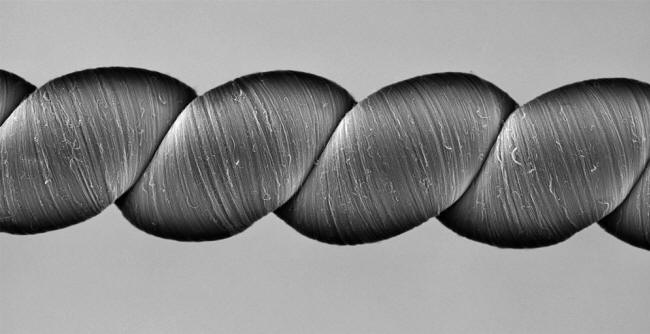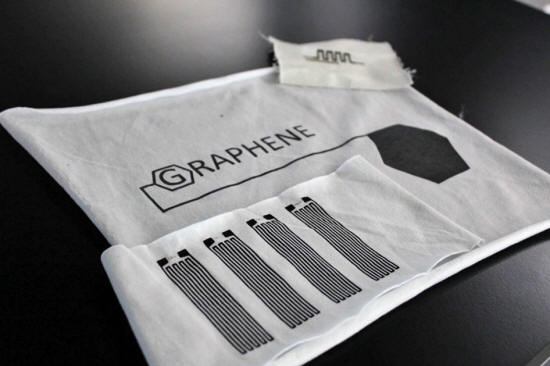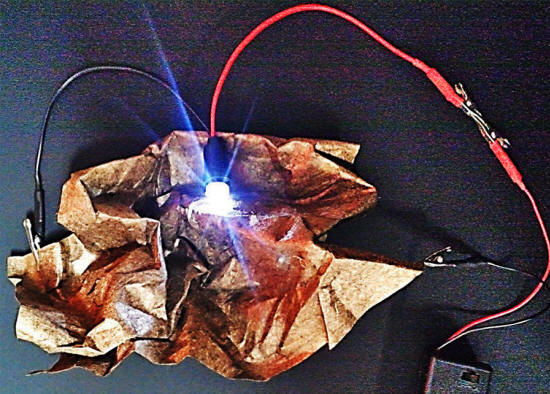|
from
Medium Website made from carbon nanotubes that can generate electricity for wearable technology. Photo: University of Texas at Dallas
It draws people's attention, gets them talking about science, and is a fun demonstration of a basic piece of wearable technology. It has one downside, though:
This pack demonstrates
the problem with a lot of wearable and non-wearable technology these
days: It's heavy and inflexible.
It'd be natural for us to want to wear our technology rather than carry it.
But to make wearable technology a real possibility, we have to move away from today's rectangular solid pieces of hardware and migrate toward more flexible, lightweight solutions.
Attaching these power
blocks to our clothes and accessories causes awkward weight
distributions. So researchers are pursuing new ways to power our
tech-clad accessories and create flexible fabric-like solutions.
The effectiveness of energy storage is primarily evaluated by looking at energy density, power density, and cycling stability. Supercapacitors often have high power density but low energy density, which limits the amount of energy that can be stored.
Batteries often have the opposite features, which results in their slow charging.
The University of Manchester recently published a paper announcing its researchers had created a supercapacitor by directly screen-printing graphene oxide ink onto cotton fabric.
Graphene oxide is a form of graphene (one atomic layer of graphite, the material in pencils) that can be produced relatively cheaply in an ink-like solution.
Making an energy storage technology that is directly applied in a thin layer to fabric drastically reduces the resulting weight for powering technology.
Just last month, the Georgia Institute of Technology also announced developments in new flexible supercapacitors that can power wearable technology.
Instead of being created directly on fabric, the researchers decided to use paper. Their device uses metallic nanoparticles to coat fibers in the paper. In this specific experiment, gold and a binding agent were applied in a series of layers to create supercapacitor electrodes with high energy and power densities.
The result is a large surface area that functions as a current collector.
Although the experiment was done using only small pieces paper, the researchers believe the process could be scaled up by dipping the paper in larger tanks or by using a spray technique.
Photo: Georgia Institute of Technology
After testing, the team at Georgia Tech found that even after folding the paper thousands of times, the paper could still conduct electricity as if it had not been folded at all.
This gave the researchers hope that this could be a perfect solution for wearable technology designs that can bend with the movement of the human body.
Making Power
Energy must be generated before it can be stored in the batteries of supercapacitors.
While conventional methods might rely on charging from a traditional wall outlet, researchers from the University of Texas at Dallas and South Korea's Hanyang University have their sights set a bit higher.
Because, wearable technology will often be in motion, the devices will move along with their owner.
This team of researchers decided to harness motion through the use of carbon nanotubes - hollow cylinders of carbon 10,000 times smaller in diameter than a human hair.
As reported in Science, these carbon nanotubes can be twisted into yarn, forming what researchers call a "twistron harvester." They harness both twisting and pulling mechanical energy and turn it into electricity.
To make the yarns highly elastic, the team coiled them like an over-twisted rubber band.
Then, to generate electricity, the yarns were submerged in or coated with an ionically conducting material, or electrolyte - in this case, a simple mixture of ordinary table salt and water, which helps the yarn conduct electricity. When person wears clothing made with this yarn, their movements generate electricity.
These new creations still have similarities to the other supercapacitor creations.
But their main difference is that no additional charge would be needed.
In the lab, the researchers showed that twistron yarn weighing less than a fly could power a small LED, which lit up each time the yarn was stretched.
The researchers also sewed twistron harvesters into a shirt. Normal breathing stretched the yarn and generated an electrical signal, demonstrating its potential as a self-powered respiration sensor.
Scientists are hoping to bring down the price of these supercapacitor-related technologies and enable them to scale in the coming years.
As ease of use increases, these fabric, paper, and yarn supercapacitors will be able to move out of the lab and into our daily lives.
|




